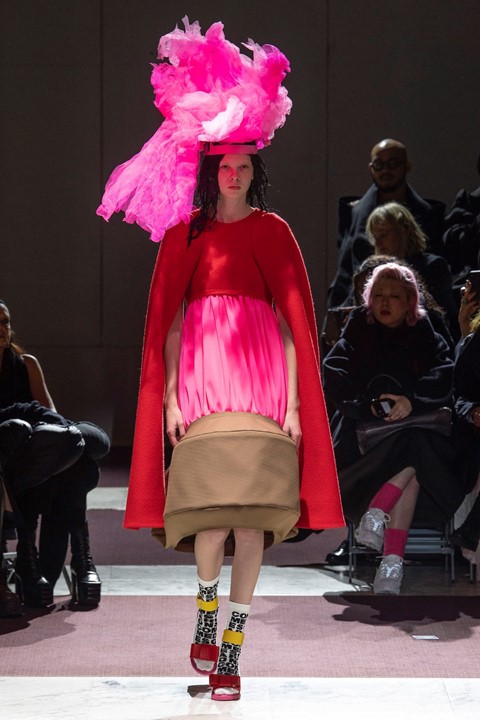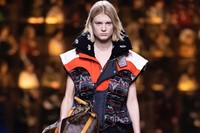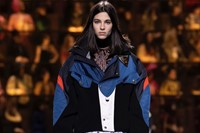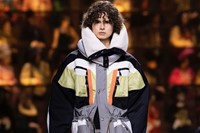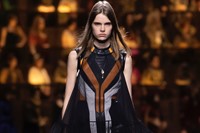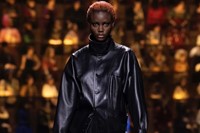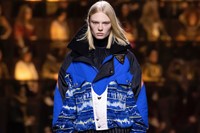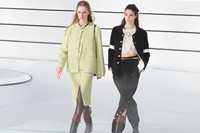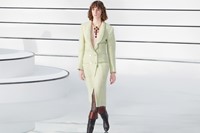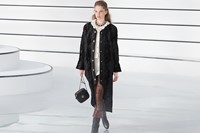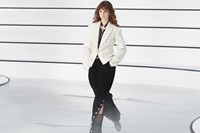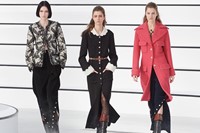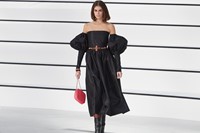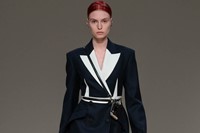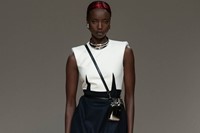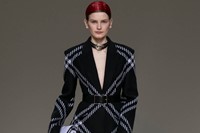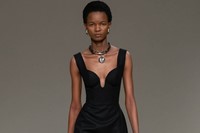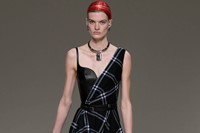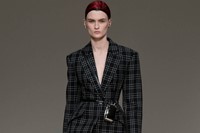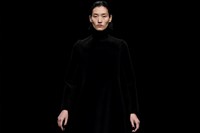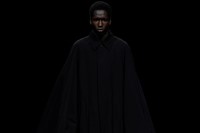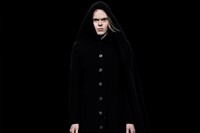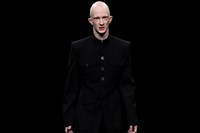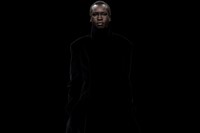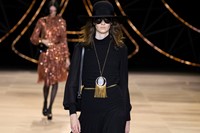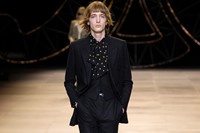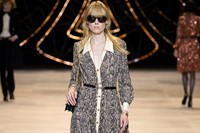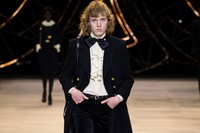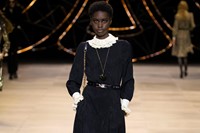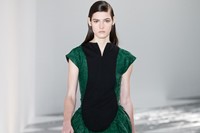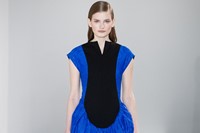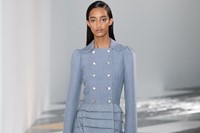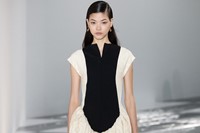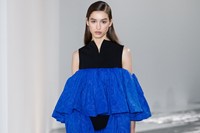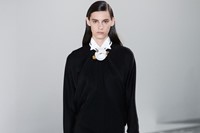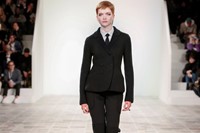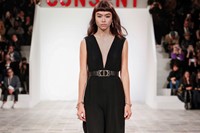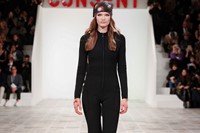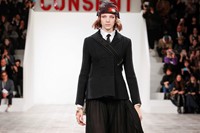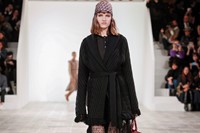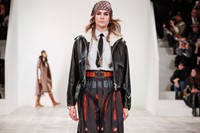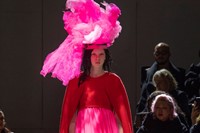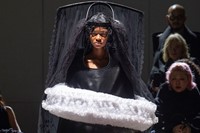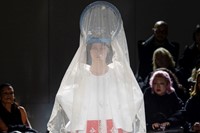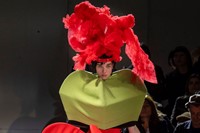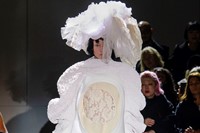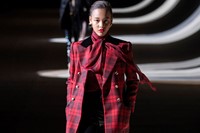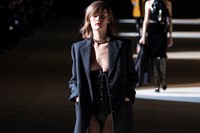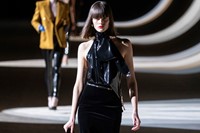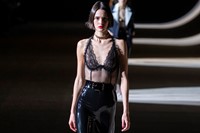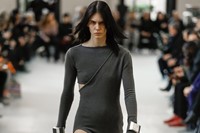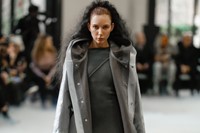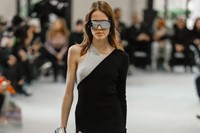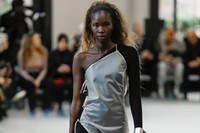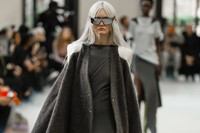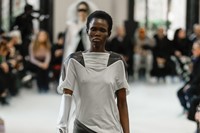The moments that mattered at Paris’ Autumn/Winter 2020 womenswear shows
Louis Vuitton
“The pure pleasure of fashion” was the sentiment behind Nicolas Ghesquière’s Autumn/Winter 2020 offering for Louis Vuitton, which masterfully merged past, present and future. Fusing elements of 18th-century and 1980s fashion, the collection advocated “dressing without protocol”. The show saw a special collaboration with Stanley Kubrick-costume designer Milena Canonero, who created some 200 characters from eras as far reaching as the 15th century, all the way to the 1950s, who formed a choir which backdropped the show. “Personality takes precedence: everyone can pen their own history,” was Ghesquière’s message after the show.
Chanel
Virginie Viard described her A/W20 collection for Chanel as an exploration of “romanticism but without any flourishes”, “emotions but without any frills”. The beautifully pared-back collection – which was staged in Paris’ Grand Palais, and saw models walk the runway in groups of two or three – brought together house signatures, like the camellia and bouclé tweed, and a focus on equestrian silhouettes, stemming from a 1980s photograph of the late Karl Lagerfeld wearing jodhpurs and riding boots. “Movement, air ... A very simple, very pure momentum,” Viard mused.
Alexander McQueen
“The collection is a love letter to women and to families, colleagues and friends,” said Sarah Burton of her Autumn/Winter 2020 collection for Alexander McQueen which embodied a thoughtful tribute to the nation of Wales. “We went to Wales and were inspired by the warmth of its artistic and poetic heritage, by its folklore and the soul of its craft.” Drawing on traditional Welsh shawls, blankets, and costume, the collection featured references to daffodils, love spoons and the Wrexham Tailor’s Quilt – an 1842 patchwork coverlet housed in at St Fagans National Museum of History in Cardiff.
Balenciaga
A flooded runway, around which stadium-style seating was part-submerged, provided the apocalyptic setting for Demna Gvasalia’s latest collection (a vast LED screen on the ceiling, flashing images of stormy skies and burning flames, added to the sense of impending doom). The largely black collection drew inspiration from the austere vestments of priests Gvasalia remembered from his childhood spent in Georgia’s Orthodox church; as a parallel, various subcultural ‘sects’, from football fans to goths, were interwoven.
Celine
Fizzing with a sense of extreme, after-dark glamour, Hedi Slimane’s latest outing for Celine was “full of dangerous, early 70s cinematic frisson” according to Dean Mayo Davies. Featuring velvet, leathers, silk blouses and embroideries worthy of the name ‘couture’, the collection was Slimane’s most unisex to date and featured a special collaboration with the renowned French sculptor César, which comprised a limited edition of 200 pieces of jewellery in silver and vermeil.
Loewe
Optimism and excitement were the words Jonathan Anderson used to describe his most recent collection for Loewe, in an echo of the similarly uplifted mood at his eponymous label’s show last month in London. Here, he drew on what he called the “austereness and the pomp of Spanish iconography”, for a series of pieces both regal and unexpected – at the centre was a brocade gown, which gathered around a black panel at the front (the style was reiterated in various colours and provided his silhouette for the season). Elsewhere, a collaboration with Japanese ceramicist Takuro Kuwata – whether panels inset into dresses or hanging like trinkets from bags – demonstrated Anderson’s commitment to craft, and inimitable eye for detail.
Dior
Artworks by the anonymous feminist art collective Claire Fontaine adorned the Dior showspace for A/W20, in Paris’ Jardin des Tuileries. Phrases like “Women’s Love is Unpaid Labour”, “Feminine Beauty is a Ready Made”, “Patriarchy = Climate Emergency” and “Consent” appeared as large neon signs, backgrounding a collection that explored contemporary womanhood. Maria Grazia Chiuri was thinking about how her own formative years, and the influence of her mother, have affected her approach to fashion. “I have this memory of [my mother] saying that when women want to change the way they dress, the dress becomes a way to express themselves,” Chiuri said prior to the show. “Sometimes, you don’t remember the name of the designer, but you remember the name of the woman wearing the dress.”
Comme des Garçons
“Is it not impossible to make something completely and utterly new, since we are all living in this world?” asked Rei Kawakubo in typically esoteric manner of her most recent collection, which she titled Neo Future. What followed were 20 sculptural looks, each set to their own soundtrack, which melded past, present and future – from towering bridal-lace headdresses, ballooning tulle skirts, and colourful PVC obtrusions, to Comme-branded socks and trainers – to create something which did, despite Kawakubo’s protestations, feel entirely new.
Saint Laurent
“For Saint Laurent, elegance is mandatory but it also goes with perversity,” read the notes at Anthony Vaccarello’s A/W20 show for Saint Laurent, “one without the other would only be plain bourgeoisie or vulgarity”. Here, perversity came in the form of latex, which proliferated throughout the collection – the material featured in 65 of the 67 looks – imbuing the collection with a sense of transgressive, but nonetheless restrained, elegance.
Rick Owens
“The clothes have a vaguely grey Bauhaus/Klaus Nomi vibe,” said Rick Owens of his subversively elegant Autumn/Winter 2020 collection, which paid tribute to his childhood idol Gary Numan. Soundtracked by the “chilly doomed glamour” of Numan’s song Down In the Park – the designer sent a personal request for useage – the collection saw amplified shoulders, opalescent leathers, satin gowns and hulking blanket capes form a powerful vision of futuristic glamour. Revealed once again at Paris’ Palais de Tokyo – Owens’ chosen venue each season – the Performa show both fondly remembered Owens’ teen self, “a small-town sissy in 1979”, while boldly looking forward as “a 58-year-old man at the peak of his all too numbered powers”.
